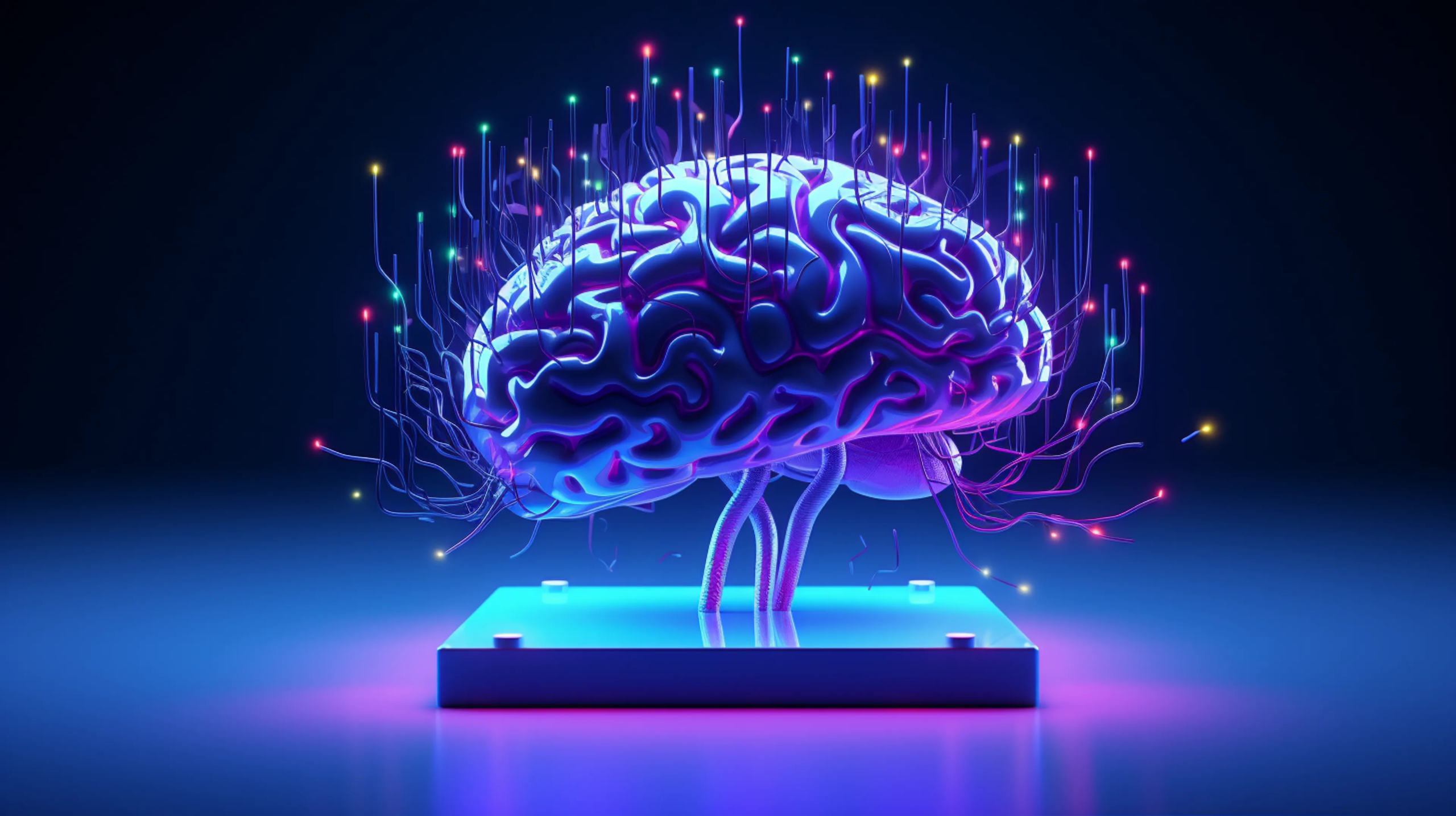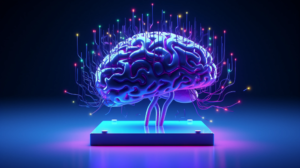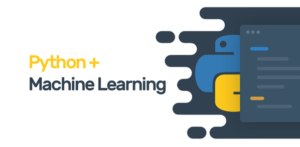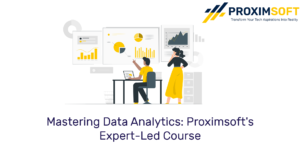Categories Artificial Intelligence, Data Analytics
From Basics to Brilliance: AI Fundamentals

Start an exciting journey into the world of Artificial Intelligence with Proximsoft’s up-to-date course. Created by experienced industry professionals, this program is made to give you a strong foundation in AI theory and practical skills, helping you confidently navigate the dynamic world of artificial intelligence.
In this course, you’ll dive into the details of Artificial Intelligence, exploring various topics such as problem-solving methods, game playing, knowledge representation, and application development. Join us to discover the simplicity of Artificial Intelligence with Proximsoft.
Why Learn Artificial Intelligence?
- AI is at the forefront of technological advancement, and mastering it opens doors to lucrative career opportunities in various industries.
- Artificial Intelligence applications span a wide range, from language models to robotics, making it a versatile skill set with numerous practical applications.
- Understanding intelligent agents, problem-solving methods, and game playing provides a strong foundation for AI development and innovation.
- This course offers practical exercises in Python and R programming, essential for implementing AI algorithms and applications.
- Proximsoft’s AI course equips you with the skills needed to work on complex AI projects and contribute to the ongoing evolution of this transformative technology.
| Mode of Training | Online live Interactive sessions |
| Duration of the Training | 6 weeks |
| Training duration per day | 60 – 90 min session |
| Software Access | Software will be installed/server access will be provided, whichever is possible |
| Training Materials | Soft copy of the material will be provided during the training |
| Training fee | Depends on the Requirement |
| Resume Preparation | Yes, at the end of the course based on the JD |
| Interview Preparation | Yes, by sharing some FAQ’s |
| Mock calls | Yes, 2 Technical Mock calls |
| Internship Project | Yes |
| Certification | Yes, at the end of the training |
| JOB Assistance | Yes |
| JOB Support | Yes |
| Weekdays | 6AM -2 PM EST & 6-11:30 PM EST (student can pick any 1 hr) |
| Weekends | 8 AM – 12 PM EST (student can pick any 2 hrs) |
What I will learn?
- Introduction to Artificial Intelligence
- Problem Solving Methods and Search Strategies
- Knowledge Representation and Ontological Engineering
- Software Agents and Multi-agent Systems
- AI Applications: Language Models, Robotics, and More
- R Programming Essentials for AI
- Python Programming Essentials for AI
- Numpy and Pandas for Data Manipulation
- Statistics and Probability for Data Analysis
- Time Series Analysis and Forecasting in AI
Introduction to Artificial Intelligence
- Artificial Intelligence Introduction
- Future of Artificial Intelligence
- Characteristics of Intelligent Agents
- Typical Intelligent Agents
Problem Solving Methods
- Problem solving Methods
- Search Strategies
- Uninformed and Informed Search
- Local Search
- Heuristics
- Algorithms and Optimization Problems
- Searching with Partial Observations
- Constraint: Satisfaction Problems, Constraint Propagation, Backtracking Search
- Game Playing
- Optimal Decisions in Games
- Alpha-Beta Pruning
- Stochastic Games
Knowledge Representation
- First-Order Predicate Logic
- Prolog Programming
- Unification
- Forward and Backward Chaining
- Resolution
- Ontological Engineering
- Categories, Objects and Events
- Mental Events and Mental Objects
- Reasoning Systems for Categories
- Reasoning with Default Information
Software Agents
- Architecture for Intelligent Agents
- Agent communication
- Negotiation and Bargaining
- Argumentation among Agents
- Trust and Reputation in Multi-agent systems
Artificial Intelligence Applications
- Artificial Intelligence applications
- Language Models
- Information Retrieval
- Information Extraction
- Natural Language Processing
- Machine Translation
- Speech Recognition
- Robotics
- Hardware and Software for Robots
- Planning and Perception
R Programming Essentials
- Syntax
- Commands
- Packages
- Libraries
- Data Types
Data Structures
- Vectors
- Matrices
- Arrays
- Lists
- Factors
- Data Frames
Importing and Exporting Data
- Control structures
- Functions
Python Programming Essentials
- Python Overview
- About Interpreted Languages
- Advantages/Disadvantages of Python pydoc
- Starting Python
- Interpreter PATH
- Using the Interpreter
- Running a Python Script
- Using Variables
- Keywords
- Built-in Functions
- Strings Different Literals
- Math Operators and Expressions
- Writing to the Screen
- String Formatting
- Command Line Parameters and Flow Control
- Lists
- Tuples
- Indexing and Slicing
- Iterating through a Sequence
- Functions for all Sequences
- Operators and Keywords for Sequences
- List Comprehensions
- Generator Expressions
- Dictionaries and Sets
- Numpy and Pandas
- Learning NumPy
- Introduction to Pandas
- Creating Data Frames
- Grouping/Sorting
- Plotting Data
- Creating Functions
- Slicing/Dicing Operations
Statistics
- What is Statistics?
- Descriptive Statistics
- Central Tendency MeasuresThe Story of Average
- Dispersion Measures
- Data Distributions
- Central Limit Theorem
- What is Sampling?
- Why Sampling?
- Sampling Methods
- Inferential Statistics
- What is Hypothesis testing?
- Confidence Level
- Degrees of freedom
- What is p-value?
- Chi-Square test
- What is ANOVA?
- Correlation vs Regression
- Uses of Correlation and Regression
- Measure of Central Tendency
- Mean
- edian
- Mode
Measure of Positions
- Quartiles
- Deciles
- Percentiles
- Quantiles
Measure of Dispersion
- Range
- Median
- Absolute deviation about median
- Variance and Standard deviation
- Anscombe’s quartet
Other Measures
- Quartile and Percentile
- Interquartile Range
Statistical Analysis
- Relationship between attributes: Covariance, Correlation Coefficient, Chi- Square
- Skewness and Kurtosis
- Box and Whisker Plot
Probability
- Probability (Joint, marginal and conditional probabilities)
- Probability distributions (Continuous and Discrete)
- Density Functions and Cumulative functions
Time Series Analysis
- Time Series Analysis
- Describe Time Series data
- Format your Time Series data
- Different Types of Components of Time Series data
- Discuss different kinds of Time Series scenario
- Choose the model according to the Time series scenariov
- Implement the model for forecasting
- Explain working and implementation of ARIMA model
- Illustrate the working and implementation of different ETS models
- Forecast the data using the respective model
- Time Series variables
- Different components of Time Series data
- Visualize the data to identify Time Series Components
- Implement ARIMA model for forecasting
- Exponential smoothing models
- Identifying different time series scenario based on which different Exponential Smoothing model can be applied
- Implement respective model for forecasting
- Visualizing and formatting Time Series data
- Plotting decomposed Time Series data plot
- Applying ARIMA and ETS model for Time Series forecasting
- Forecasting for given Time period
Course level:All Levels
Course Duration: 30h
Requirements
- Basic knowledge of programming concepts.
- Familiarity with Python and R programming languages (covered in the course).
- A keen interest in exploring the possibilities of Artificial Intelligence.
Talk to Our Career Advisor
FAQ'S
Mastering Artificial Intelligence is highly valuable in various industries. This course equips you with practical skills and knowledge sought after by employers in the evolving tech landscape.
The course is carefully structured to cover theoretical concepts along with hands-on exercises, ensuring a balanced learning experience that enhances both understanding and practical skills.
Proximsoft maintains a continuous feedback loop with industry experts, regularly updating course content to align with the latest advancements in the field of Artificial Intelligence.
While basic programming knowledge is beneficial, this course covers programming essentials, making it accessible to learners with varying levels of experience.




